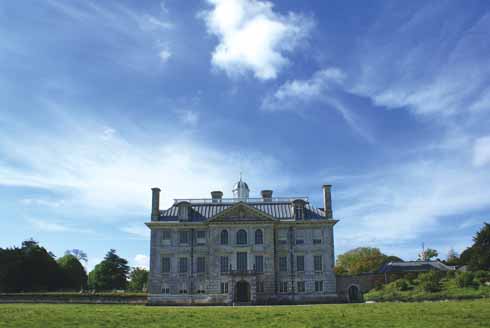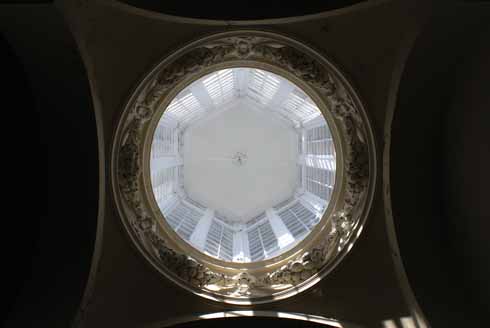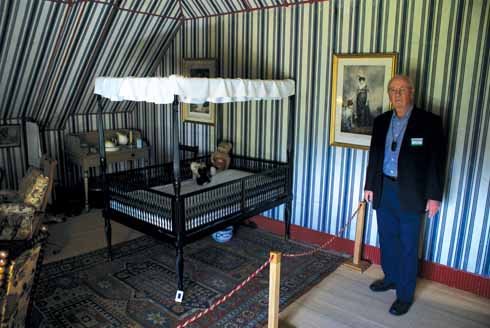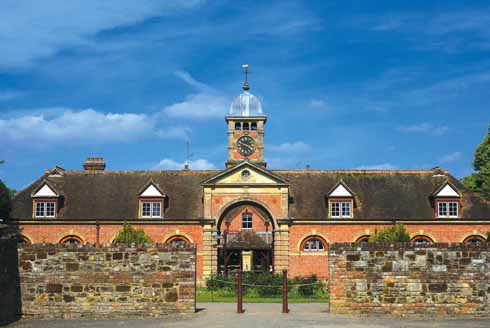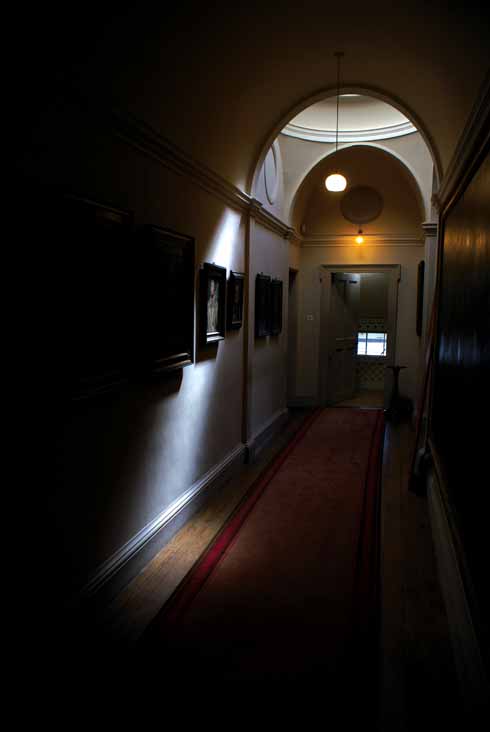A magnificent present
Joël Lacey looks at Kingston Lacy, which has both a wonderful past and a bright future, thanks to the generosity of Ralph Bankes and the work of the National Trust
Published in July ’17
When Henry John Ralph Bankes, Lord High Admiral of Purbeck, the last private owner of Corfe Castle and of Kingston Lacy and the largest private landowner in Dorset, died on 19 August 1981, Rodney Legg, founder-editor of this magazine and council member of the National Trust, had been on the verge of publishing a highly critical piece about him. The specific subject of Rodney’s piece in issue 97 was to have been that, when Kingston Lacy had abruptly closed to the public ‘temporarily’ for repairs in 1968 – after 15 years of opening – it never re-opened, when it should in fact have continued to have public access under the provisions of the repair grant system.

The statue of Charles I on the main staircase of Kingston Lacy, with the siege of Corfe Castle shown on the shield below
The reason why that critical piece did not appear was because of Bankes’s death and further, the astonishing news of his bequest: a near-priceless package of land and art treasures which his will’s executors bequeathed at his request to the nation (and the following year vested in the National Trust). It was and is the most valuable gift the National Trust has received since its formation in 1895.
Rodney wrote a brief encomium to Henry John Ralph Bankes, concluding that although Bankes had served as a magistrate (after a stint in his twenties as High Sheriff), that became the limit of his public life. Rodney concluded by saying: ‘He spent the rest of his time at Kingston Lacy, running the estate with consummate skill, and perhaps one about whom we knew so little was the greatest Dorset man of the 20th century.’

The billiards room contains an exhibition of William John Bankes’s Egyptian and Nubian finds like this tablet
That may have been the case, but the house itself at Kingston Lacy had not worn well during the last fifteen years of Bankes’s stewardship. In the 35 years since the National Trust accepted responsibility for the house (and the rest of the estate) in 1982, there has been a near ceaseless programme of works to return the house to its former glory, to preserve and protect the art treasures by Rubens, Van Dyck, Titian, Tintoretto, Velázquez, Lely and Snyders and others and to re-create the splendour of Kingston Lacy to provide a window into the world of various generations of the only family ever to have owned the property.
From commissioning wallpaper to match the painted walls of the tent fabric in the attic children’s room, through finding the right kind of detergent to show in the house’s laundry, to getting a Tintoretto restored to such an extent that its title had to be changed as the content of the picture could be more clearly seen, there are simply too many tales to tell in a single article. The scale of the achievement is perhaps hinted at by the anecdote about the Wimborne removal man who, in the earliest days of the National Trust’s work, helped to remove the valuables en masse to places of safety at sympathetic local landowners’ estates. He could not bring himself to revisit the house, so heart-breaking had its condition been when first he came. Finally, twenty years after the event, he felt able to return and was stunned by the transformation. He need not have waited quite so long as significant strides had been made in just four years to allow the house finally to be re-opened to the public as Rodney Legg so desired.
The house, like the family that occupied it, crosses the generations, and different parts of Kingston Lacy relate to different periods of the family’s occupation, from the red brick building’s completion in 1665 to its first remodelling in the 1780s, then its most comprehensive re-imagining – including its dressing with Chilmark stone as we now see it – between 1825 and 1841 by William John Bankes, and advances in interior plumbing made in Edwardian times. Like so many of the wonderful artworks it houses, Kingston Lacy’s history has been built up, layer by layer and, thanks to the careful stewardship of the Bankes family and the National Trust, is available for all to view. Like the house, the Fernery, Japanese garden, kitchen garden (at one point second only to Kew Gardens’) and Parterre represent different periods and styles of English country homes and a gentle amble through them (with the exception of the Parterre, which is off-limits) in the summer sun is a good walk, augmented.
For details of forthcoming events (including the showing of Velázquez’s La Tela Real on display until September 2017), entry prices and other information, visit www.national-trust.org.uk/kingston-lacy or call 01202 883402.
